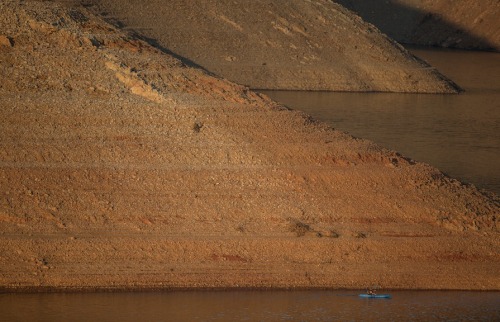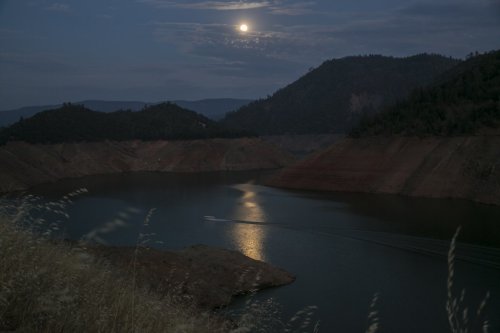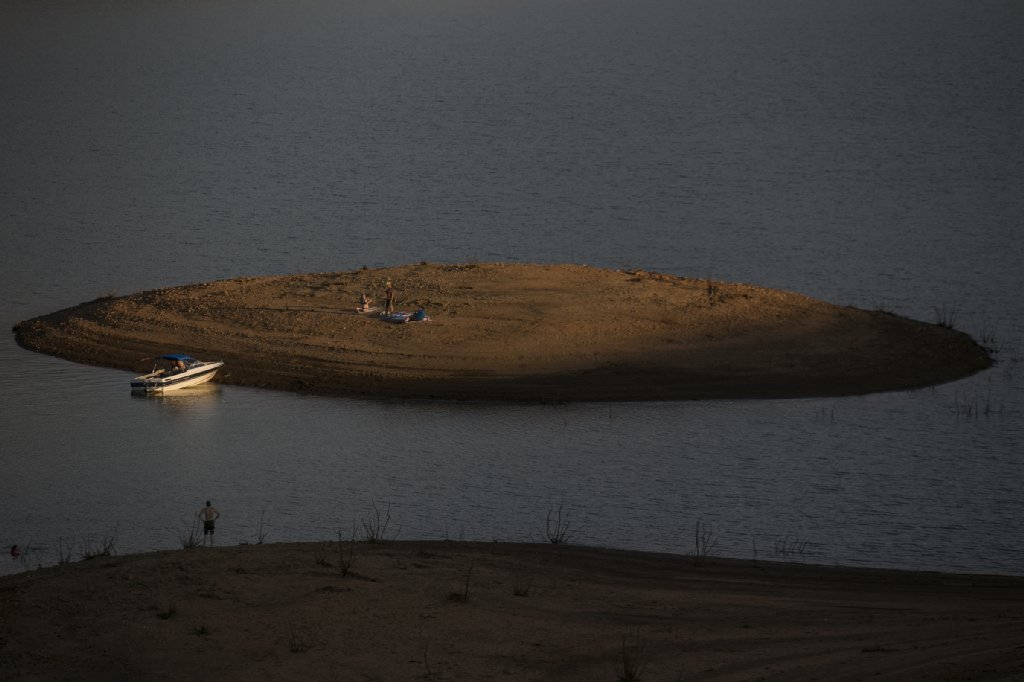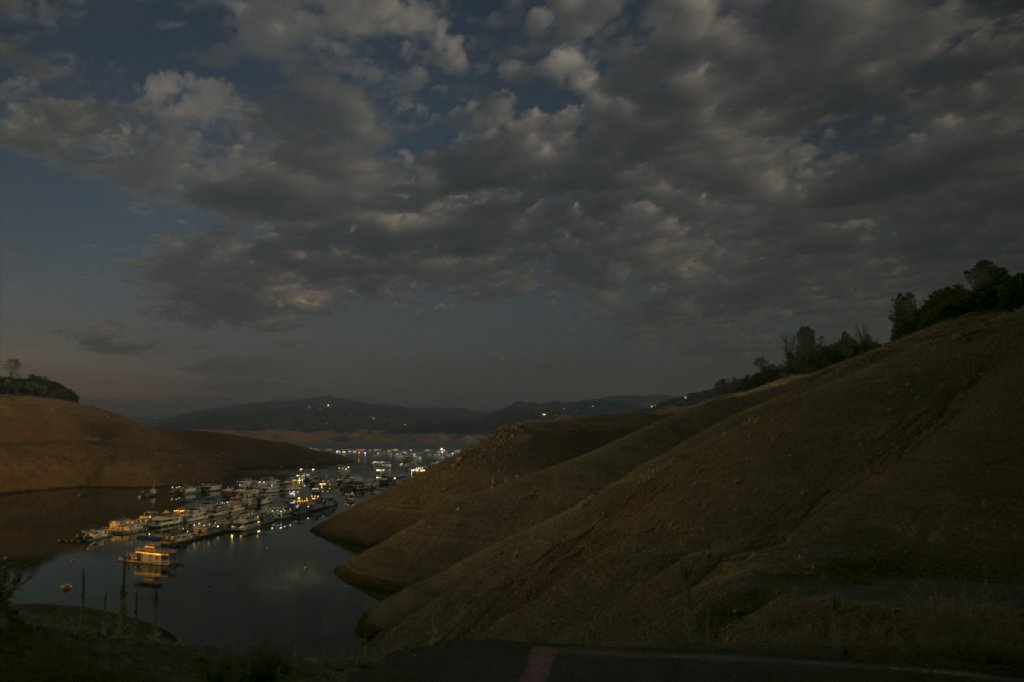




The difference between knowing something and seeing something
Story by Diana Marcum
Photos by Robert Gauthier
I once interviewed Woody Guthrie’s daughter, and she told me her father believed in the power of names.
Sometimes he would sing just a name over and over as a device of honor. I thought about this at the top of Oroville Dam.
There was a plaque with the names of 34 men who had died in the ′60s while building the dam, the highest in the United States.
Thirty-four. I looked it up later – there was a fiery tunnel crash that killed four. But no accident with mass casualties. This was construction workers in dangerous jobs mostly dying one by one: Orlin. Buel. Bennie. Elmer. Eino. “Slim.”

Rob, the photographer, was nearby filming a black trash bag billowing in the wind on a dam that affects the fate of all of California. It was a hot wind that would whip up, disappear, then blow again. The temperature was well on its way to the day’s high of 106. The sky to the west was hazy with smoke from wildfires.
We were the only people in sight. (Far below us people were working inside the massive dam and power plant.)
It would be a spectacular evening full of strange clouds and a blue moon that would draw joggers to the top of the dam and fishing fans to the water.
But for now, it felt haunted. Because there’s this disconnect between knowing something and seeing something.
The lake is at 33% capacity, and photos of Oroville’s drop have been published for years. But, still, that first glimpse: My eyes traveled from the treeline down-down-down burnt-orange cliffs and finally to the water. The houseboats crowded on the narrowed lake looked like they were cars in a choo-choo train.
“Oh God,” we both said.


At the first parking lot, we could see a busy dock far (far) below. There didn’t seem to be a way to get there other than by boat, until we watched dockworker E.J. Pulley.
He jumped from rock to rock down the hillside like he was skating, then pulled himself across the last chasm on a suspended cable.
He gave a shrug about his route to work.
“It’s been like this for years now,” he said. “But if the lake gets any lower, we won’t go down. It gets too dangerous.”
At the next marina, a boat ramp still reached water. A family waited their turn to launch, in a boat on a trailer in an asphalt parking lot, already wearing their life vests.
I went down to the water to throw a stick for Murphy, navigating large rocks, then dried mud – empty ketchup packets and clothing tags set in it like fossils – then black, wet mud as sticky as thousands of pieces of bubblegum.
We’ve seen a lot of low lakes this trip. But this was different. Oroville is the great-granddaddy centerpiece of the State Water Project.
If you live in California, chances are very good you’re somehow tied to Lake Oroville: It supplies drinking water to more than 23 million people from Napa to San Diego, protects the Sacramento Valley from floods, irrigates the Central Valley and flushes salt from the delta. Only Shasta can hold more water.
And there’s boating and swimming.
A big hunk of Oroville, a city of 16,000, depends on summer tourists for a living.
In June, the Oroville Chamber of Commerce put out a plea for people to come visit – letting them know there’s still some water.
People aren’t coming as often – but maybe they should: Lake Oroville’s drop has become a symbol of the California drought.
And there’s a difference between knowing something and seeing it.
 querxus liked this
querxus liked this bobv48-blog liked this
 wildcard47 liked this
wildcard47 liked this all-the-spirits-in-the-stars liked this
 riuzlu-blog liked this
riuzlu-blog liked this  marcates reblogged this from drylandsca and added:
marcates reblogged this from drylandsca and added: More great writing and beautiful pictures. Thanks guys.
 marcates liked this
marcates liked this downtostars liked this
badgersnbooks reblogged this from unrulyhedge
 bells-on-coffins liked this
bells-on-coffins liked this aldoarmand liked this
 donaldbeearts-blog liked this
donaldbeearts-blog liked this halfformed-thoughts reblogged this from latimes
climatecentraldotorg liked this
dropkickdisco6 reblogged this from lolableu
dropkickdisco6 liked this
lolableu reblogged this from latimes
 mrimonfiremr liked this
mrimonfiremr liked this drylandsca liked this
teaminfaith reblogged this from latimes
videominister liked this
tritonemediablog liked this
 overcasual reblogged this from latimes
overcasual reblogged this from latimes irishfiregirrl reblogged this from drylandsca
irishfiregirrl liked this
 passaametralhadoratia-blog liked this
passaametralhadoratia-blog liked this lali-10-10-91-blog liked this
mselainey13 liked this
fwacquez-blog liked this
 analisaswan liked this
analisaswan liked this rainhitspavement liked this
 anaelisafoto liked this
anaelisafoto liked this bluwasaabi reblogged this from drylandsca
drylandsca posted this
- Show more notes